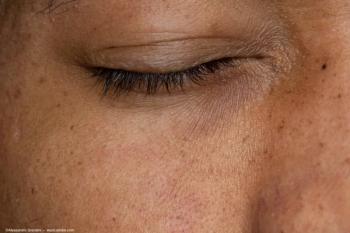
Multiple Lucentis studies offer promise of a viable AMD treatment
Two phase III trials, one phase II trial, and one extension trial of anti-VEGF agent Lucentis (Genentech) are under way.
New Orleans-Two phase III trials, one phase II trial, and one extension trial of anti-VEGF agent Lucentis (Genentech) are under way. The extension trial indicates that Lucentis provides a long-term benefit to patients and that it is well tolerated. The studies were described during retina subspecialty day at the American Academy of Ophthalmology annual meeting.
The MARINA phase III trial enrolled 716 patients with minimally classic/occult choroidal neovascularization (CNV) and patients received either sham injection or 0.3 or 0.5 mg of Lucentis monthly for 2 years; enrollment ended in December 2003. The ANCHOR phase III trial has completed enrollment of 423 patients with predominantly classic CNV. Patients are randomized to receive either photodynamic therapy (PDT) with Visudyne followed by sham injection or placebo PDT followed by Lucentis 0.3 or 0.5 mg monthly or 2 years. In the MARINA and ANCHOR trials the primary efficacy end point is the percentage of patients who lose less than 15 letters of vision at 12 months. The third trial, the FOCUS trial, a phase II trial, is investigating the effect of 0.5 mg Lucentis plus PDT administered once a month for 24 months compared with Visudyne PDT alone in patients with predominantly classic CNV. The target of enrolling 168 patients was completed in January 2004.
An extension trial is a compassion open-label use trial and is determining the long-term safety and tolerability of the multiple intravitreal injections of Lucentis for an additional 2 years for 64 patients in the earlier phase trials with recurrence of or who were at risk of recurrent disease. Jeffrey Heier, MD, of Tufts School of Medicine, Boston, explained the general findings from the studies thus far.
"There are two main points. The first is that during the time when patients were not treated, they still maintained some benefit effect of treatment," he said. "The point is that over time, patients continued to demonstrate a benefit from the treatment. These effects were seen with the different subtypes of lesions in the different studies."
The beneficial results of the extension trial have led to an ongoing study of alternative dosing (the PIER Study); they are randomized to either 24 sham injection or 24 300- or 500-mg injections of drug.
Newsletter
Don’t miss out—get Ophthalmology Times updates on the latest clinical advancements and expert interviews, straight to your inbox.


















































.png)


